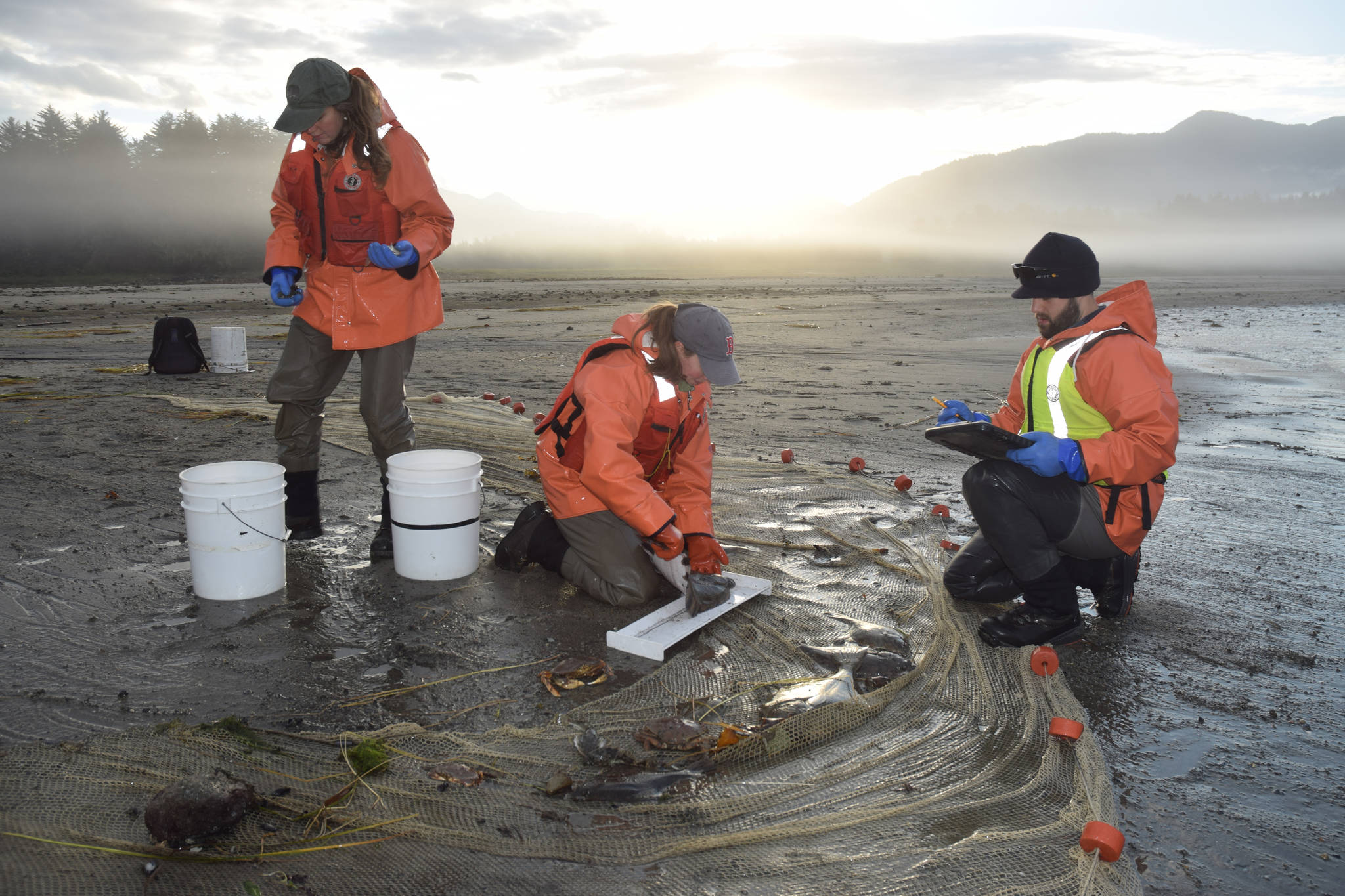When water trapped in a basin adjacent to the Mendenhall Glacier pushes through the ice, it can empty over 6 billion gallons of water into the watershed below, flooding campgrounds and backyards in the Mendenhall Valley.
The impact of the flood, or jökulhlaup, on the sea life at the edge of the watershed is less understood, but that’s changing.
In a presentation Tuesday at the Mendenhall Valley Library, University of Alaska Fairbanks associate professor Anne Beaudreau shared new data on the Mendenhall River estuary, one of the areas she and others are looking at as part of a five-year project (Fire and Ice) funded by the National Science Foundation through the Alaska Established Program to Stimulate Competitive Research (EPSCoR). The study looks at the “drivers, processes and consequences of ecological change in critical northern ecosystems.”
During this year’s jökulhlaup, Beaudreau said, the salinity of the estuary was practically cut in half for several days. That could bring about adverse effects, like shocking the systems of organisms used to living in saltwater.
[As glaciers melt, scientists try to figure out how fish will respond]
“I found this particularly interesting because it shows what the extent of that footprint of the glacial outburst flood might be,” Beaudreau said in an interview Thursday. “And the fact that it extended so deep in the estuary I thought was interesting and something we want explore a little bit further next year.”
That intimate interaction between Southeast landscapes — as evidenced in the July flood — was one of the consistent themes of Beaudreau’s talk, “In the heart of an estuary: How melting glaciers are changing Juneau’s coastal ecosystems.” The free lecture was one of the programs of NEA Big Read.
“Something that it’s done for me is to really drive home how tightly connected the land and the sea are, especially in a place like Southeast Alaska where you have such a short distance between the headwaters of these rivers and the estuary,” Beaudreau said of her work.
In addition to cataloging organisms from different Juneau estuaries, Beaudreau and fellow scientists used a sensor near the Mendenhall River to track temperature, salinity and dissolved oxygen. The Juneau estuaries studied included Cowee Creek, Eagle River, Mendenhall River, Lemon Creek and Sheep Creek. An estuary can be found in areas where a river empties out into the ocean.
Salmon was most abundant in June, sculpin was most abundant in July and flounder was most abundant in August, Beaudreau said. As the study continues, Beaudreau said the public can help out by keeping an eye on the coasts.
“Science can only do so much in terms of being able to see all the changes that are happening,” Beaudreau said, “and so people with local knowledge is really a crucial part of that puzzle, too, in terms of being on the front lines of seeing the changes that are happening out in the ocean.”
To learn more about Fire and Ice and the Juneau studies, go to alaska.edu/epscor/fire-and-ice or annebeaudreau.com.
• Contact sports reporter Nolin Ainsworth at 523-2272 or nainsworth@juneauempire.com.

